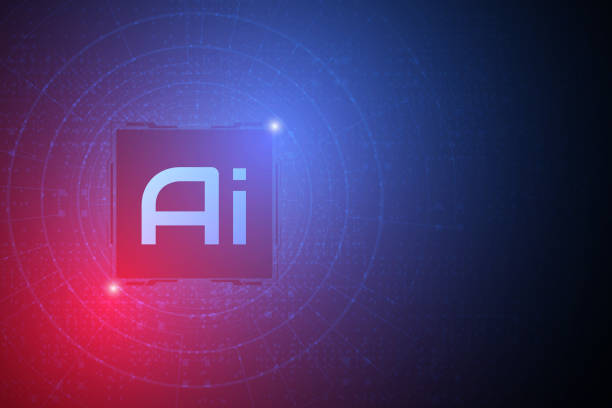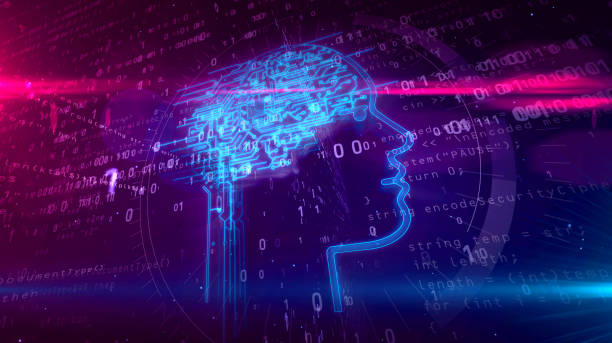What is an Artificial Intelligence Robot and How Does it Work?

Artificial Intelligence Robot is a combination of two important fields of technology, namely Artificial Intelligence (AI) and Robotics.
In other words, an Artificial Intelligence Robot is a physical machine that, using AI algorithms and models, is capable of performing tasks that typically require human intelligence.
These tasks can include learning, reasoning, problem-solving, pattern recognition, and decision-making.
The basic operation of an Artificial Intelligence Robot is based on receiving data from the surrounding environment through sensors.
These sensors can include cameras, microphones, temperature sensors, pressure sensors, and other similar tools.
The received data is then processed by processors and artificial intelligence algorithms.
These algorithms can include neural networks, support vector machines (SVM), decision trees, and other machine learning methods.
After processing the data, the Artificial Intelligence Robot can make decisions based on the information obtained and take appropriate action.
This action may include movement, manipulation of objects, speech generation, or performing any other task for which it is designed.
One of the key features of an Artificial Intelligence Robot is its ability to learn.
These robots can improve their performance through experience and feedback.
For example, an Artificial Intelligence Robot designed to perform a specific task can increase its skill in performing that task and perform better over time by repeatedly performing that task.
This learning ability allows the Artificial Intelligence Robot to perform well in complex and unpredictable environments.
#Artificial_Intelligence, using complex algorithms, gives the Artificial Intelligence Robot the power to make decisions and learn.
Learn more about Artificial Intelligence on Wikipedia.
Are you tired of losing business opportunities due to not having a professional company website? Don’t worry anymore! With Rasaweb’s corporate website design services:
✅ Your brand’s credibility and professionalism will increase.
✅ You will attract more customers and sales leads.
⚡ Get a free consultation to get started now!
Types of Artificial Intelligence Robots Based on Application
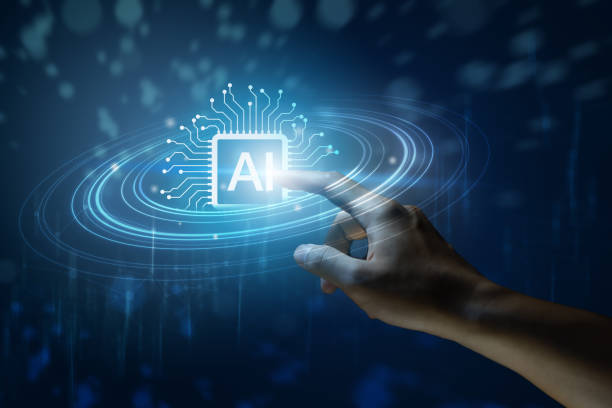
Artificial Intelligence Robots are divided into different categories based on their application.
Some of the most common types are:
1.
Industrial Robots
These robots are used in factories and production lines to perform repetitive and dangerous tasks.
They can automatically move parts, perform welding, painting, and other similar tasks.
The use of industrial robots leads to increased productivity, reduced costs, and improved safety in the workplace.
2.
Service Robots
These robots are designed to provide services to humans.
They can be used in hospitals as assistant nurses, in hotels as maids, in restaurants as waiters, and in homes as personal assistants.
Service robots can help the elderly and disabled and make daily tasks easier for them.
3.
Medical Robots
These robots are used in surgeries, rehabilitation, and other medical fields.
They can perform complex surgeries with high precision, help patients perform rehabilitation exercises, and distribute medications accurately.
The use of medical robots can lead to reduced recovery time, reduced side effects, and improved treatment outcomes.
4.
Military Robots
These robots are used in military fields to perform dangerous and difficult tasks.
They can participate in reconnaissance, bomb disposal, and combat operations.
The use of military robots can lead to reduced human casualties and increased efficiency of military operations.
5.
Space Robots
These robots are designed to explore space and perform tasks in environments inaccessible to humans.
They can sample soil from planets, repair space equipment, and build structures in space.
Artificial Intelligence Robots are expanding in various industries.
Learn more about the advantages of robotics on relevant websites.
Key Algorithms in Artificial Intelligence Robots

Several algorithms are used in the development of Artificial Intelligence Robots, but some of them are of particular importance:
1.
Machine Learning
Machine learning is a branch of artificial intelligence that allows machines to learn from data without explicit programming.
Machine learning algorithms can be used for pattern recognition, prediction, and decision-making.
In Artificial Intelligence Robots, machine learning is used to train robots to perform various tasks, improve performance, and adapt to new environments.
2.
Neural Networks
Neural networks are computational models inspired by the structure of the human brain.
They are made up of a large number of nodes called neurons that are connected in layers.
Neural networks can be used to solve complex problems such as image recognition, natural language processing, and robot control.
In Artificial Intelligence Robots, neural networks are used for object detection, routing, and motion planning.
3.
Natural Language Processing (NLP)
Natural language processing is a branch of artificial intelligence that allows machines to understand and produce human language.
NLP algorithms can be used to translate languages, summarize text, and answer questions.
In Artificial Intelligence Robots, NLP is used to interact with humans, receive instructions, and provide information.
4.
Computer Vision
Computer vision is a branch of artificial intelligence that allows machines to understand images and videos.
Computer vision algorithms can be used for object detection, facial recognition, and motion tracking.
In Artificial Intelligence Robots, computer vision is used for routing, obstacle detection, and interaction with objects.
5.
Expert Systems
Expert systems are computer programs that mimic the knowledge and reasoning of a human expert.
They can be used to solve complex problems, provide advice, and make decisions.
In Artificial Intelligence Robots, expert systems are used to detect errors, plan repairs, and provide guidance to humans.
These algorithms, working together, enable the Artificial Intelligence Robot to perform complex tasks.
| Algorithm | Application in Artificial Intelligence Robot |
|---|---|
| Machine Learning | Training robots to perform various tasks |
| Neural Networks | Object detection, routing, motion planning |
| Natural Language Processing | Interacting with humans, receiving instructions |
| Computer Vision | Routing, obstacle detection, interaction with objects |
Advantages of Using Artificial Intelligence Robots
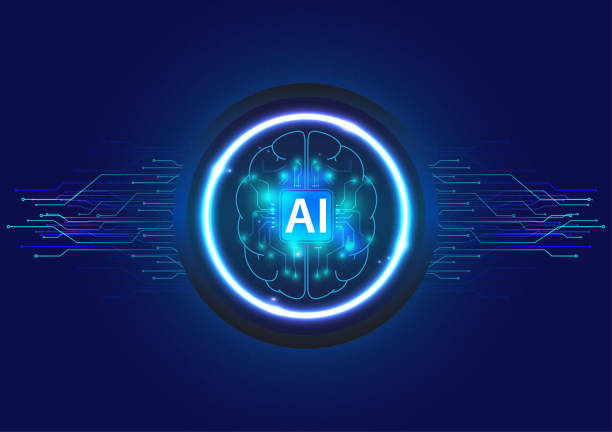
The use of Artificial Intelligence Robots has many advantages, the most important of which include:
1.
Increased Productivity
Artificial Intelligence Robots can perform tasks faster and more accurately than humans.
They can work 24 hours a day without the need for rest, which leads to increased productivity and reduced costs.
2.
Improved Safety
Artificial Intelligence Robots can perform dangerous and difficult tasks instead of humans.
This leads to a reduced risk of injury and death in the workplace.
3.
Improved Quality
Artificial Intelligence Robots can perform tasks with greater precision and repeatability than humans.
This leads to improved quality of products and services.
4.
Reduced Costs
Artificial Intelligence Robots can reduce the costs of labor, energy, and raw materials.
They can perform tasks automatically and reduce the need for human supervision.
5.
Increased Innovation
Artificial Intelligence Robots can help humans perform creative and innovative tasks.
They can analyze data, recognize patterns, and suggest new solutions.
Artificial Intelligence Robots have the potential to create tremendous transformations in various industries.
Don’t have a company website yet and are missing online opportunities? With professional corporate website design by Rasaweb,
✅ Double the credibility of your business
✅ Attract new customers
⚡ Free consultation for your company website!
Challenges of Developing and Implementing Artificial Intelligence Robots

Despite the many advantages, the development and implementation of Artificial Intelligence Robots also faces challenges:
1.
High Cost
Developing and implementing Artificial Intelligence Robots can be very expensive.
This is due to the need for technical expertise, advanced equipment, and training data.
2.
Shortage of Skilled Personnel
The number of experts in the field of artificial intelligence and robotics is limited.
This can hinder the development and implementation of Artificial Intelligence Robots on a large scale.
3.
Ethical Issues
The use of Artificial Intelligence Robots can create various ethical issues.
For example, there are questions about the accountability of robots in the event of errors, the protection of data privacy, and the impact of robots on employment.
4.
Security Issues
Artificial Intelligence Robots can be vulnerable to cyber attacks.
Hackers can control robots, steal their data, and disrupt their performance.
5.
Public Acceptance
Some people are concerned about the impact of Artificial Intelligence Robots on their lives.
They may fear losing their jobs, reduced human interaction, and increased dependence on machines.
To overcome these challenges, there is a need for investment in research and development, training skilled personnel, developing appropriate laws and regulations, and raising public awareness.
Despite these challenges, the future of Artificial Intelligence Robots is bright and it is expected that we will see an increasing expansion of their use in various industries in the coming years.
With technological advances, Artificial Intelligence Robots will become more complex and intelligent and will be able to perform tasks that are difficult to imagine today.
The Future of Artificial Intelligence Robots and Their Impact on Society

The future of Artificial Intelligence Robots is very bright and full of potential.
It is expected that we will see significant advances in this field in the coming years.
Artificial Intelligence Robots will become more complex, intelligent, and capable and will be able to perform tasks that are difficult to imagine today.
These advances will have a profound impact on society.
One of the most important impacts of Artificial Intelligence Robots will be on employment.
With increasing automation, many repetitive and manual jobs will be replaced by robots and intelligent systems.
This can lead to increased unemployment and social inequality.
However, Artificial Intelligence Robots will also create new job opportunities.
For example, the need for experts in the design, development, maintenance, and repair of robots and intelligent systems will increase.
Artificial Intelligence Robots will also have a significant impact on healthcare.
Surgical robots can perform complex surgeries with greater precision and speed.
Nurse robots can help patients with daily tasks.
Pharmacist robots can distribute medications accurately.
The use of Artificial Intelligence Robots in healthcare can lead to improved quality of treatment, reduced costs, and increased access to healthcare services.
Artificial Intelligence Robots will also have a major impact on education.
Intelligent education systems can help students learn in a personalized way.
Teacher robots can teach lessons to students and answer their questions.
The use of Artificial Intelligence Robots in education can lead to improved quality of education, increased student motivation, and reduced educational inequality.
However, the development and use of Artificial Intelligence Robots will also bring challenges.
One of the most important challenges is ethical issues.
For example, there are questions about the accountability of robots in the event of errors, the protection of data privacy, and the impact of robots on human relationships.
To overcome these challenges, there is a need to develop appropriate laws and regulations, raise public awareness, and promote ethics in the development and use of Artificial Intelligence Robots.
Overall, the future of Artificial Intelligence Robots is bright and it is expected that we will see an increasing expansion of their use in various industries in the coming years.
However, to benefit from the advantages of Artificial Intelligence Robots and reduce their risks, there is a need for careful planning, investment in research and development, the development of appropriate laws and regulations, and increased public awareness.
Learn more about Robotics on Wikipedia.
Artificial Intelligence Robots in Iran: A Case Study

In Iran, efforts are also being made to develop and use Artificial Intelligence Robots.
Although these efforts are in the early stages compared to more advanced countries in this field, they indicate attention and interest in this technology in the country.
Some of the applications of Artificial Intelligence Robots in Iran include:
1.
Industrial Robots
Some factories and production units in Iran use industrial robots to perform repetitive and dangerous tasks.
These robots are usually imported from abroad, but efforts are also underway to produce indigenous industrial robots.
2.
Service Robots
A number of companies and startups in Iran are developing service robots for use in hospitals, hotels, restaurants, and homes.
These robots can be used as assistant nurses, maids, waiters, and personal assistants.
3.
Educational Robots
Some schools and universities in Iran use educational robots to teach scientific and engineering concepts to students.
These robots can help students learn problem-solving, critical thinking, and teamwork skills.
4.
Agricultural Robots
A number of companies and researchers in Iran are developing agricultural robots for use in farms and orchards.
These robots can help farmers with tasks such as irrigation, spraying, harvesting, and identifying pests and diseases.
Despite these efforts, the development and use of Artificial Intelligence Robots in Iran also faces challenges.
These challenges include a lack of investment, a shortage of skilled personnel, a lack of appropriate infrastructure, and legal and regulatory issues.
To overcome these challenges, there is a need for government support, private sector investment, education development, and the development of appropriate laws and regulations.
Despite these challenges, there is high potential for the development and use of Artificial Intelligence Robots in Iran.
Given the country’s young and educated population, the presence of strong universities and research centers, and the need to increase productivity in various industries, it is expected that we will see significant growth in this area in the coming years.
Comparing Artificial Intelligence Robots with Humans
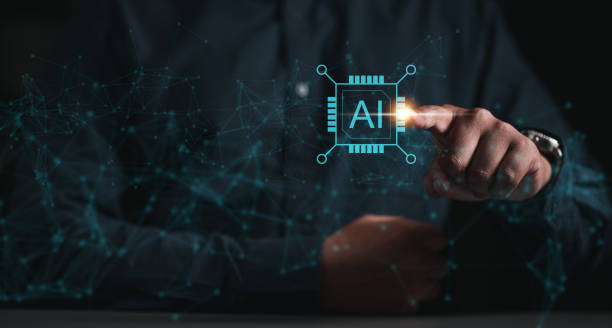
Artificial Intelligence Robots and humans both have abilities, but they differ in some fundamental ways.
1.
Speed and Accuracy
Artificial Intelligence Robots can usually perform tasks faster and more accurately than humans.
They are able to process large amounts of data in a short time and are less prone to error.
2.
Endurance and Tirelessness
Artificial Intelligence Robots can work 24 hours a day without the need for rest.
They do not get tired and do not need vacation or rest.
3.
Learning Ability
Artificial Intelligence Robots can learn from data and improve their performance over time.
However, their learning ability is usually limited to specific tasks for which they are designed.
4.
Creativity and Innovation
Humans are usually more creative and innovative than Artificial Intelligence Robots.
They are able to think outside the box, solve complex problems, and create new ideas.
5.
Emotions and Empathy
Humans have emotions and empathy.
They can understand the feelings of others and empathize with them.
Artificial Intelligence Robots lack emotions and empathy.
6.
Ethical Judgment
Humans are capable of ethical judgment.
They can tell what is right and what is wrong.
Artificial Intelligence Robots lack ethical judgment and operate based on the algorithms defined for them.
Overall, Artificial Intelligence Robots excel at performing repetitive, accurate, and high-volume tasks, while humans excel at performing creative, innovative, and ethically judgmental tasks.
The best approach is to use Artificial Intelligence Robots to perform tasks for which they are suitable and to use humans to perform tasks that require creativity, innovation, and ethical judgment.
| Feature | Artificial Intelligence Robot | Human |
|---|---|---|
| Speed and Accuracy | High | Low |
| Endurance | High | Low |
| Creativity | Low | High |
| Emotions | None | Has |
Are you worried about losing customers who don’t have a professional online store?
Forget these worries with online store design by Rasaweb!
✅ Significant increase in sales and visitor-to-customer conversion rate
✅ Professional and user-friendly design that builds customer trust
⚡ Get a free consultation from Rasaweb
Ethical Issues Surrounding Artificial Intelligence Robots

The development and use of Artificial Intelligence Robots creates several ethical issues that need to be examined and addressed:
1.
Accountability
If an Artificial Intelligence Robot makes a mistake and causes damage, who will be responsible? Is the robot manufacturer, the robot user, or the robot itself responsible? Determining accountability in these cases is difficult and requires the development of appropriate laws and regulations.
2.
Privacy
Artificial Intelligence Robots typically collect and process large amounts of data.
This data can include personal information, financial information, and other sensitive information.
Protecting the privacy of this data is very important and requires the use of strong security methods and compliance with relevant laws and regulations.
3.
Discrimination
Artificial intelligence algorithms can unintentionally be discriminatory.
For example, a facial recognition algorithm may be less accurate in recognizing the faces of people with dark skin tones.
To prevent discrimination, there is a need for careful examination of algorithms and the use of diverse and balanced training data.
4.
Employment
With increasing automation, many jobs will be replaced by robots and intelligent systems.
This can lead to increased unemployment and social inequality.
To address this problem, there is a need to create new job opportunities, train new skills, and provide appropriate social support.
5.
Control
As technology advances, Artificial Intelligence Robots will become more complex and independent.
This can create concerns about controlling them.
To prevent misuse of Artificial Intelligence Robots, there is a need to develop strict laws and regulations, use appropriate monitoring methods, and promote ethics in their development and use.
To address these ethical issues, there is a need for cooperation between government, industry, academia, and civil society.
By holding discussions, developing appropriate laws and regulations, and promoting ethics, we must ensure the responsible development and use of Artificial Intelligence Robots.
For more information on the ethical issues of artificial intelligence, you can refer to credible sources.
How to Choose an Artificial Intelligence Robot for Your Business?
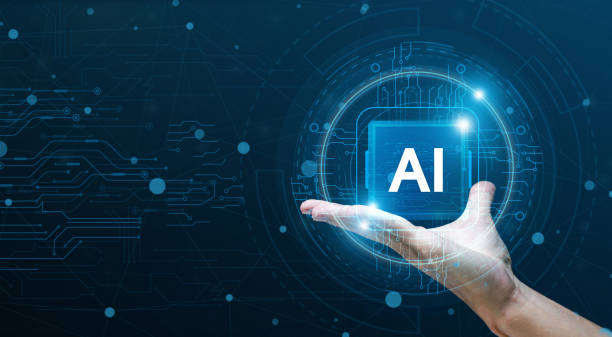
Choosing the right Artificial Intelligence Robot for your business can be a vital decision that impacts your efficiency, productivity, and profitability.
Here are a few key tips to help you with this process:
1.
Determine Business Needs
First, you need to identify the specific needs of your business.
What tasks do you want to assign to an Artificial Intelligence Robot? Are you looking to automate repetitive processes, improve customer service, analyze data, or something else?
2.
Research Types of Artificial Intelligence Robots
There are different types of Artificial Intelligence Robots designed for different applications.
Some of the most common types include chatbots, process automation robots, data analysis robots, and marketing robots.
Do some research and see which type of Artificial Intelligence Robot is best suited for your needs.
3.
Assess Capabilities and Features
Once you’ve determined the type of Artificial Intelligence Robot you need, you need to assess different capabilities and features.
Look for an Artificial Intelligence Robot that has the capabilities you need, such as natural language processing, machine learning, computer vision, and so on.
4.
Consider Cost
The cost of an Artificial Intelligence Robot can vary widely.
Before making a decision, you should consider your budget and compare different prices.
Keep in mind that the cost is not just the purchase price, but also includes maintenance, training, and upgrade costs.
5.
Check Vendor Reputation
When purchasing an Artificial Intelligence Robot, you should check the vendor’s reputation.
Make sure that the vendor has sufficient experience and expertise in the field of artificial intelligence and provides good support services.
6.
Do a Test
Before making a final purchase, try testing the Artificial Intelligence Robot.
This will help you make sure that the Artificial Intelligence Robot meets your needs and delivers the expected performance.
By following these tips, you can choose the right Artificial Intelligence Robot for your business and benefit from it.
Artificial Intelligence Robots can help you automate processes, improve customer service, analyze data, and increase profitability.
Frequently Asked Questions
| Row | Question | Answer |
|---|---|---|
| 1 | What is an Artificial Intelligence Robot? | An Artificial Intelligence Robot is a machine capable of understanding, reasoning, learning, and problem-solving, and can perform complex tasks with relative autonomy. |
| 2 | What are the most important applications of artificial intelligence robots? | The main applications include industrial production, customer service (chatbots), medicine and surgery, self-driving transport, space exploration, and military affairs. |
| 3 | What is the main difference between an Artificial Intelligence Robot and a regular robot? | A regular robot only follows programmed instructions, while an Artificial Intelligence Robot can learn from data, make decisions, and adapt to new environments. |
| 4 | How do artificial intelligence robots learn? | They identify patterns and improve their performance through machine learning algorithms (such as deep learning, reinforcement learning) and processing vast amounts of data. |
| 5 | Can artificial intelligence robots have emotions? | Currently, artificial intelligence robots do not have real emotions in the human sense. They can mimic or recognize emotions, but they do not understand or experience them. |
| 6 | What are the current limitations of artificial intelligence robots? | Limitations include the need for a lot of data, the inability to understand abstract concepts, the lack of real creativity, ethical issues, and the challenges of generalizability in new environments. |
| 7 | What is the role of artificial intelligence in the development of humanoid robots? | Artificial intelligence helps humanoid robots walk, maintain balance, understand the environment, interact with humans, and perform complex tasks. |
| 8 | How is the future of artificial intelligence robots predicted? | It is predicted that artificial intelligence robots will become smarter, more autonomous, and capable of performing more complex tasks in everyday life and industry, and their interaction with humans will increase. |
| 9 | Can artificial intelligence robots replace all human jobs? | It is unlikely that all human jobs will be replaced. Robots will take over many repetitive and dangerous tasks, but jobs that require creativity, empathy, and ethical judgment will remain. |
| 10 | What ethical and social challenges are raised by the expansion of artificial intelligence robots? | Challenges include issues related to privacy, data security, ethical decision-making by robots, the impact on employment, and accountability in the event of errors. |
And other services of Rasa Web advertising agency in the field of advertising
Smart Brand Identity: Designed for businesses looking to increase sales through attractive user interface design.
Smart Sales Automation: A professional solution for increasing click-through rates by focusing on the use of real data.
Smart Direct Marketing: A fast and efficient solution for user engagement with a focus on SEO-driven content strategy.
Smart Content Strategy: An innovative service to increase customer acquisition through custom programming.
Smart Digital Advertising: A combination of creativity and technology to analyze customer behavior through custom programming.
And over a hundred other services in the field of internet advertising, advertising consulting, and organizational solutions
Internet Advertising | Advertising Strategy | Advertorial
Resources
What is Artificial Intelligence? | IBM
,Artificial Intelligence Definition | Gartner
,What is Analytics? | NVIDIA
,Artificial Intelligence Applications | Built In
? Rasaweb Advertising Agency, by offering comprehensive and innovative solutions, paves the way for the growth and brilliance of your business in the digital world. From website design with a modern user interface and search engine optimization to targeted advertising campaigns, we are committed to building a bright future for your brand.
📍 Tehran, Mirdamad Street, next to the Central Bank, South Kazerun Alley, Ramin Alley No. 6

